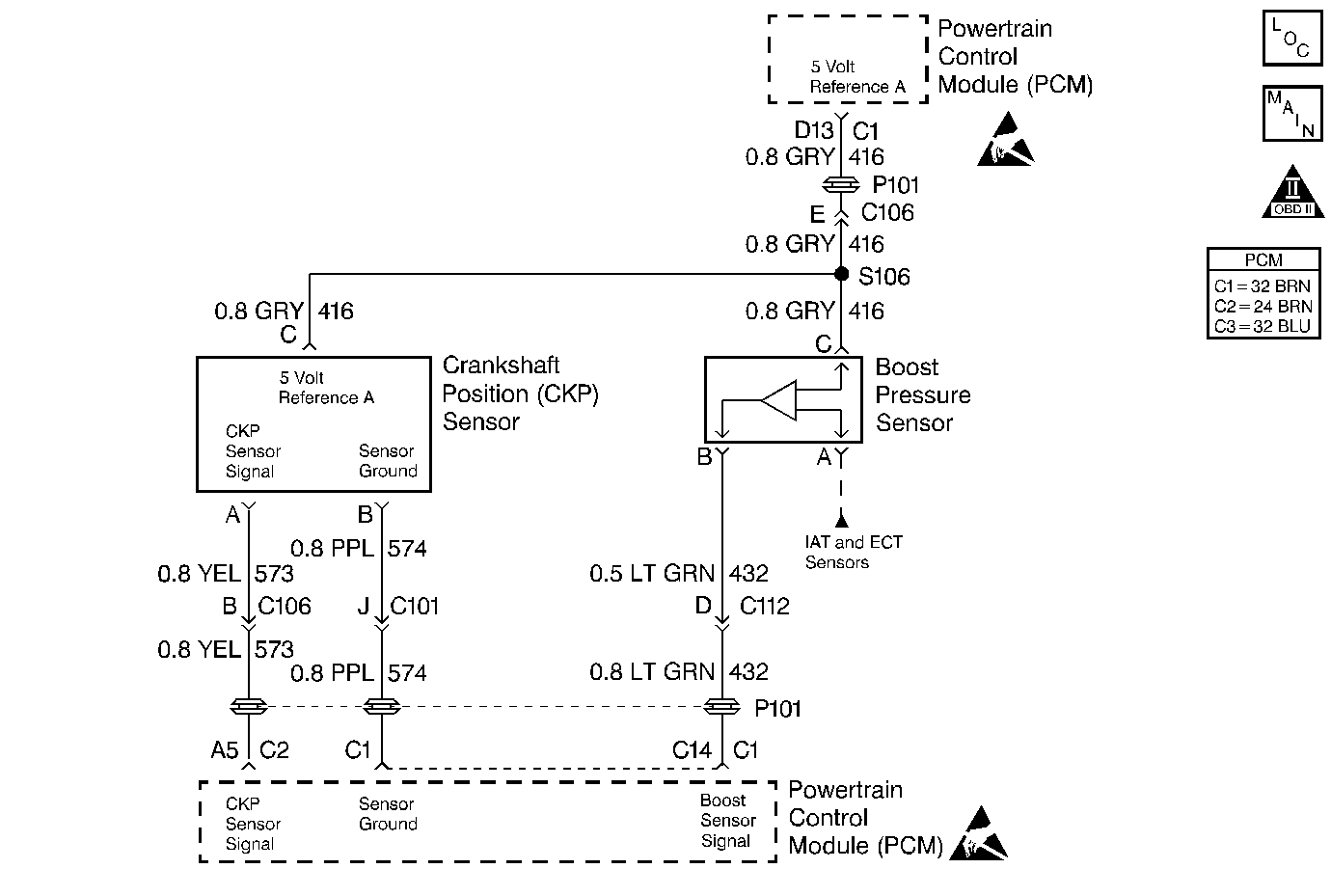
Circuit Description
The Accelerator Pedal Position (APP) module provides a voltage signal that changes relative to the accelerator pedal position. There are three sensors which are located within the APP module that are scaled differently. This is a type D DTC.
Conditions for Setting the DTC
| • | The Boost Pressure is greater than or equal to 4.8 volts (202 kPa). |
| • | The engine speed is less than 3506 RPM. |
Action Taken When the DTC Sets
There is no turbo boost.
Conditions for Clearing the MIL/DTC
| • | The PCM will turn the MIL off after three consecutive trips without a fault condition. |
| • | A History DTC will clear after forty consecutive warm-up cycles during which the diagnostic does not fail (the coolant temperature has risen 5°C (40°F) from the start up coolant temperature and the engine coolant temperature exceeds 71°C (160°F) of that same ignition cycle). |
| • | Use of a Scan Tool will clear the DTC codes. |
Diagnostic Aids
Very little boost can be attained by revving the engine in neutral.
An intermittent can be caused by the following:
| • | Poor connections |
| • | A rubbed through wire insulation |
| • | A broken wire inside of the insulation |
Test Description
Number(s) below refer to the step number(s) on the Diagnostic Table.
-
This step will determine if the PCM is responding to a low signal voltage. This will indicate that the PCM is OK.
-
If the scan display is still less than or equal to 9 kPa by disconnecting the PCM the short to voltage is in the wiring.
-
If the voltmeter value stays the same by disconnecting the PCM the short to battery voltage is in the wiring.
Step | Action | Value(s) | Yes | No |
|---|---|---|---|---|
1 |
Important: Before clearing the DTCs, use the scan tool Capture Info to save the Freeze Frame and failure records for reference. The control module's data is deleted once the Clear Info function is used. Did you perform the Powertrain On-Board Diagnostic (OBD) System Check? | -- | ||
2 |
Does the scan tool display a Boost Pressure greater than or equal to the specified value? | 202 kPa | ||
Does the Scan tool display a Boost Pressure less than or equal to the specified value? | 10 kPa | |||
4 |
Is the current less than the specified value? | 10 mA | ||
5 |
Are any additional DTCs stored? | -- | Go to the Applicable DTC Table | Go to Diagnostic Aids |
6 |
Probe the 5 volt reference circuit at the boost sensor harness. Is the voltage greater than the specified value? | 5.2 V | ||
7 |
Is the voltage within the within the specified range? | 4.8-5.2 V | ||
8 |
Is the action complete? | -- | ||
Is the action complete? | -- | |||
Is the action complete? | -- | -- | ||
11 |
Is the action complete? | -- | ||
12 |
Is the action complete? | -- | ||
13 |
Is the action complete? | -- | ||
14 |
Important:: The new PCM must be programmed. Refer to Powertrain Control Module Replacement/Programming Is the action complete? | -- | -- | |
15 |
Does the scan tool indicate the diagnostic Passed? | -- | ||
16 | Does the scan tool display any additional undiagnosed DTCs? | -- | Go to the Applicable DTC Table | System OK |
